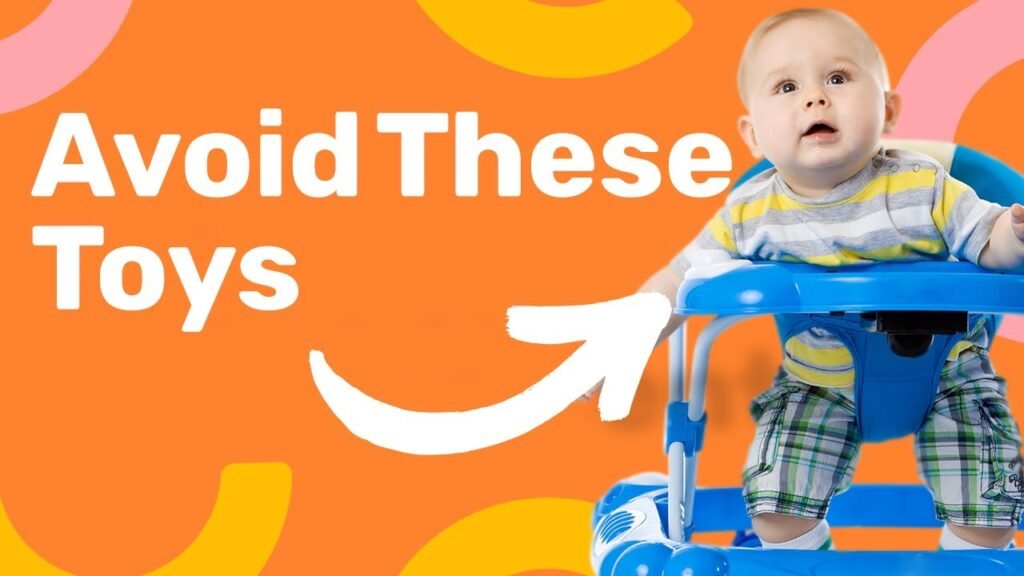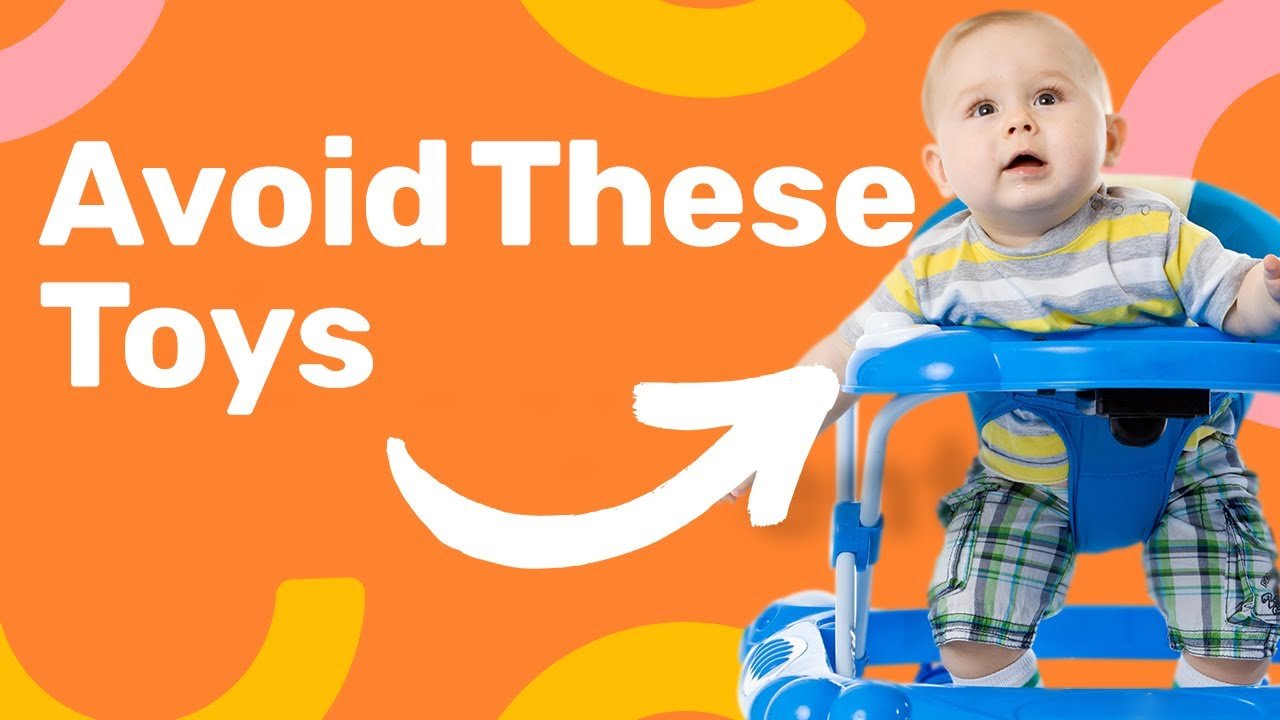Common baby toys may delay development and pose safety risks when overused. In this article/video, I will discuss some common baby toys that may do more harm than good. For example, baby floor seats can limit movement and lead to developmental delays and hip dysplasia, while baby jumpers can negatively affect development and increase the risk of injuries. Exersaucers may encourage poor alignment and delay standing and walking skills, and baby walkers are not safe and can result in head and neck injuries. It is important to limit the use of these toys to 10-15 minutes per day and always seek professional medical advice for any concerns about your child’s health and development.
Baby Toys and Development
The impact of common baby toys on development
Baby toys play a crucial role in a child’s overall development, as they provide opportunities for learning, exploration, and sensory stimulation. However, it is essential to understand the potential risks and limitations associated with certain toys to ensure your child’s safety and healthy development.
Common baby toys, such as floor seats, jumpers, exersaucers, and walkers, have gained popularity among parents. While these toys may seem beneficial at first glance, they can have negative effects on a child’s development when overused or misused.
The potential risks when overusing baby toys
Overusing baby toys can hinder a child’s natural developmental process. For example, baby floor seats are designed to assist infants in sitting upright before they have developed the necessary trunk control. While these seats may seem convenient, they limit a baby’s movement and prevent them from engaging in activities that promote core strength and balance. This can lead to delays in reaching important developmental milestones, such as crawling and independent sitting.
Similarly, baby jumpers, which allow babies to bounce using their toes, may be entertaining, but they can negatively impact a child’s development. Babies in jumpers tend to lean forward, adopting an incorrect posture that can delay the development of proper standing and walking skills. Additionally, prolonged use of jumpers can lead to the shortening of calf muscles, potentially requiring medical intervention to correct.
Exersaucers, also known as stationary play centers, are often marketed as tools to strengthen a baby’s leg muscles. However, placing a baby in an exersaucer before they can stand independently can result in poor alignment and incorrect posture. This can hinder a baby’s progress in learning to stand and walk effectively.
Lastly, baby walkers, which have been a popular choice for many parents, pose significant safety risks. Not only can they cause head and neck injuries if a child falls or topples over, but they also increase the chances of burns, scalds, choking, and even poisoning if a baby can access harmful substances within their reach. Due to these safety concerns, experts strongly advise against using baby walkers.
The importance of considering toy usage
While baby toys can provide entertainment and stimulation, it is crucial to consider their impact on a child’s development. Striking a balance between playtime and the developmental needs of your child is key to ensuring a healthy upbringing.
Limiting the usage of certain baby toys to a specified timeframe is recommended. Experts suggest that using floor seats, jumpers, exersaucers, and walkers for no more than 10-15 minutes per day can help prevent potential developmental delays and safety risks. By setting time limits, parents can ensure that their child has ample opportunity for unrestricted movement, exploration, and engagement in other developmental activities.
Furthermore, parental supervision is vital when using baby toys. Keeping a close eye on your child while they play with toys can help identify any potential safety hazards and ensure that they are using the toys correctly. Regularly checking the condition of the toys for any signs of wear or damage is also essential to prevent accidents.
Parents should also consider alternatives to certain baby toys. Instead of relying solely on floor seats, parents can encourage their child to engage in tummy time exercises to strengthen the muscles needed for independent sitting. For babies who enjoy bouncing, alternatives like a baby push walker can aid in developing the required muscle strength and coordination for walking.
Benefits of Baby Push Walkers
Baby push walkers are an excellent alternative to traditional baby walkers. These toys provide numerous benefits for a child’s development:
Facilitating learning to walk
Baby push walkers enable babies to practice their standing and walking skills in a safe and supported manner. By grasping the push walker’s handle, babies can use it as a stable support while taking their first steps. Push walkers promote balance and coordination, allowing babies to gain confidence and gradually transition to walking independently.
Promoting muscle strength and coordination
Using a baby push walker engages various muscle groups, such as the legs, arms, and core. This promotes overall muscle strength and coordination, helping babies develop the necessary skills for walking. Pushing the walker forward requires babies to stabilize their bodies and coordinate their movements, enhancing their motor skills.
Comparing baby push walkers to baby walkers
Unlike traditional baby walkers, which rely on wheels and a seat, baby push walkers prioritize the natural movement and muscle engagement required for walking. Baby push walkers promote upright posture, correct weight-bearing, and proper foot placement. They encourage babies to take steps using their own leg muscles, ensuring proper alignment and reducing the risk of delay in reaching walking milestones.
Importance of Professional Advice
Ensuring the optimal development and safety of your child requires seeking professional advice from healthcare professionals. Consulting with pediatricians, physical therapists, or occupational therapists can provide insights into your child’s specific needs and guide you in selecting appropriate toys.
Engaging healthcare professionals for developmental concerns
If you notice any delays or concerns regarding your child’s development, it is crucial to consult with healthcare professionals. Pediatricians and therapists can assess the situation, identify any underlying issues, and recommend appropriate interventions to address them. Early intervention and guidance from professionals specialized in child development play a significant role in optimizing a child’s progress.
Seeking expert advice on toy selection
Determining which toys are suitable for your child’s developmental stage can be challenging. Healthcare professionals can offer valuable advice on selecting toys that align with your child’s needs and abilities. They can recommend toys that promote fine motor skills, cognitive development, sensory exploration, and physical activity while ensuring safety.
Monitoring child’s health and development
Regular monitoring of your child’s health and development is essential for identifying any potential concerns or delays. Routine check-ups with healthcare professionals allow them to track your child’s progress and address any emerging issues promptly. Being proactive in monitoring your child’s development ensures that appropriate measures can be taken at the right time.

Conclusion
Understanding the potential risks and limitations associated with common baby toys is essential for providing a safe and nurturing environment for your child’s development. While these toys may seem convenient and entertaining, overusing or misusing them can have detrimental effects on a child’s progress.
By limiting the usage of certain toys, considering alternatives, and seeking professional advice, parents can ensure their child’s safety, promote healthy development, and strike a balance between playtime and necessary milestones. Prioritizing safety and consulting healthcare professionals play a vital role in providing the best possible upbringing for your child.

